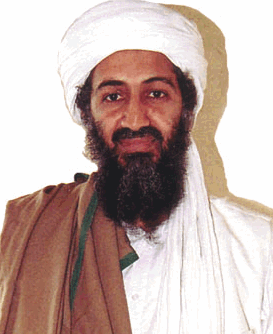Exploiting the Rift in Taliban Leadership
 As I discussed in a previous post, it appears that there may be a potential rift developing among the top leadership of the Afghan Taliban. Last month, the Taliban officially announced their plan to replace Taliban Deputy Leader (and de facto leader of day-to-day operations) Mullah Abdul Ghani Baradar with two different individuals - an unusual move that prompted many to question the decision of Taliban leader Mullah Omar. According to multiple reports, all military operations would be overseen by Mullah Abdul Qayim Zakir (for more on him, see my previous post here) and all logistics/support operations would be the responsibility of Mullah Akhtar Muhammad Mansoor.
As I discussed in a previous post, it appears that there may be a potential rift developing among the top leadership of the Afghan Taliban. Last month, the Taliban officially announced their plan to replace Taliban Deputy Leader (and de facto leader of day-to-day operations) Mullah Abdul Ghani Baradar with two different individuals - an unusual move that prompted many to question the decision of Taliban leader Mullah Omar. According to multiple reports, all military operations would be overseen by Mullah Abdul Qayim Zakir (for more on him, see my previous post here) and all logistics/support operations would be the responsibility of Mullah Akhtar Muhammad Mansoor.A recent article in the UK's Times Online provided additional insight into this developing rift, quoting sources within the Taliban and on the ground in Afghanistan who have confirmed the growing tensions within the Taliban's Inner Shura (top council of leaders). According to a tribal elder in Southern Afghanistan with strong links to the insurgency, "When Mullah Baradar was arrested, Mullah Mansoor thought he would be his replacement...when Zakir was introduced as the defense minister, [Mansoor] was disappointed." According to the report, this resentment has caused a bitter power struggle between the two, forcing subordinate commanders to choose sides. Mullah Mansoor, who was appointed as the Kandahar province shadow governor in 2007, felt he was the logical choice to run all military operations in the Southern region. He reportedly asked the Taliban's leadership council for military control of Helmand and Kandahar after Baradar was detained, but his efforts were blocked by Mullah Zakir and his supporters. Zakir, who is also from Helmand province (and spent several years detained at Guantanamo Bay) and has a reputation as a brutal and aggressive fighter, replied that, "I'm the defense minister. I control all of Afghanistan, we should work together."

As US and ISAF forces continue shaping operations in preparation for an offensive in Kandahar, it will be critical for us to take advantage of this growing rift within the Taliban's ranks. US and partner ISAF forces should make this a major information operations (IO) theme and interweave it within both their lethal and non-lethal operations. During key leader engagements (KLEs) and shuras, leaders should draw attention to the feud, gain more information about it, and highlight the fact that Taliban leaders are only out for themselves and care little about the people of Afghanistan. If the results of the poll quoted above are truly representative of the people's sentiment in Kandahar, then we have a long way to go in terms of discrediting the Taliban. The rift theme should also be heavily played upon in IO products to support our lethal targeting and exploitation operations - making a concerted effort to leave stay-behind fliers/leaflets and spread the word that different leaders and commanders are turning on each other and providing information to US forces. This will help to exacerbate the already-existent feud and increase paranoia across the organization. I've seen firsthand how effective this can be in dividing insurgent organization and creating additional targeting opportunities for US and partner forces.
Osama Bin Laden
Osama bin Laden died in Abbottabad, Pakistan. USA president Obama said Justice has been done.
A big day for both Nations. Osama Bin Laden was in Abbottabad in a compound with his family and friends.
 Osama Bin Laden
Osama Bin Laden Osama Bin Laden
Osama Bin Laden Osama Bin Laden Dead
Osama Bin Laden Dead Osama Bin Laden killed
Osama Bin Laden killed Osama Bin Laden
Osama Bin LadenOsama bin Laden died in Abbottabad, Pakistan. USA president Obama said Justice has been done.
A big day for both Nations. Osama Bin Laden was in Abbottabad in a compound with his family and friends.



